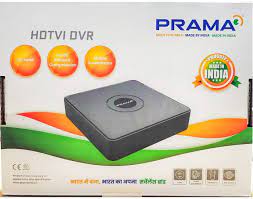Barriers: Enhancing Safety and Security
In our fast-paced world, safety and security have become paramount concerns. Whether it’s protecting public spaces, managing traffic flow, or safeguarding private properties, the need for effective barriers has never been greater. Barriers play a crucial role in enhancing safety and security by controlling access, preventing unauthorized entry, and managing crowd movement.
One of the most common types of barriers is the physical barrier. These include boom barriers, spike barriers, motorized swing and sliding doors, gates, bollards, blockers, and turnstiles. Physical barriers are designed to restrict access to specific areas or control the flow of people or vehicles. They act as a deterrent against unauthorized entry while allowing authorized individuals to pass through with ease.
Physical barriers are widely used in various settings such as airports, government buildings, shopping malls, parking lots, residential complexes, and industrial sites. They provide a visible and tangible means of protection by creating a physical boundary that prevents vehicles or individuals from gaining unauthorized access.
Another type of barrier that has gained significant importance is the digital barrier. With advancements in technology, digital barriers have become an integral part of modern security systems. These include access control systems with keycards or biometric authentication methods like fingerprint or facial recognition.
Digital barriers offer enhanced security features such as real-time monitoring, remote access control management, and integration with other security systems like CCTV cameras and alarm systems. They provide an efficient way to manage access to restricted areas while maintaining a log of entry and exit activities for auditing purposes.
Barriers also play a crucial role in traffic management. Road safety barriers are installed on highways to prevent vehicles from crossing into oncoming traffic or leaving the road altogether. These barriers protect drivers from potential accidents by redirecting errant vehicles back onto the road or absorbing impact forces.
In crowded events or public gatherings like concerts or sports matches, crowd control barriers are essential for maintaining order and ensuring the safety of attendees. These barriers help create designated pathways, separate different sections, and prevent overcrowding or stampedes.
Additionally, barriers are used in industrial settings to safeguard workers from potential hazards. Safety barriers can be seen around machinery or hazardous areas, preventing accidental contact and reducing the risk of accidents.
Barriers are not limited to physical structures alone; they can also be virtual or psychological. For example, warning signs, caution tape, or marked boundaries act as psychological barriers by alerting individuals to potential dangers or restricted areas.
In conclusion, barriers are indispensable tools for enhancing safety and security in various environments. They provide a means to control access, manage crowd flow, and protect against potential threats. Whether physical or digital, these barriers contribute significantly to creating a secure environment for individuals and properties alike. By investing in robust barrier systems and staying updated with the latest advancements in technology, we can ensure a safer future for everyone.
8 Essential Tips for Creating a Barrier Against COVID-19
- Make sure to maintain social distancing by staying at least 6 feet away from others and avoiding large gatherings.
- Wear a face covering when in public or around people who don’t live in your household.
- Wash your hands often with soap and water for at least 20 seconds, especially after going to the bathroom; before eating; and after blowing your nose, coughing, or sneezing.
- Avoid touching your eyes, nose, and mouth with unwashed hands.
- Clean frequently touched surfaces and objects regularly using regular household cleaning spray or wipes.
- Stay home if you are feeling sick or have any symptoms of COVID-19 including fever, cough, shortness of breath, chills, muscle pain, headache etc., and contact your doctor for advice on testing for COVID-19 if needed .
- Practice good respiratory etiquette by covering your mouth and nose when coughing or sneezing with a tissue then throwing it away immediately after use .
- Follow the latest guidance from local health authorities as well as the Centers for Disease Control (CDC) about how to best protect yourself from coronavirus (COVID-19).
Make sure to maintain social distancing by staying at least 6 feet away from others and avoiding large gatherings.
Maintaining Social Distancing: A Barrier Against the Spread
In these unprecedented times, social distancing has become a crucial barrier in preventing the spread of infectious diseases. The simple act of staying at least 6 feet away from others and avoiding large gatherings can have a significant impact on curbing the transmission of viruses.
Social distancing acts as a protective shield, creating a physical barrier between individuals and potential sources of infection. By maintaining this distance, we reduce the risk of respiratory droplets carrying viruses from reaching us or others nearby. It is an effective measure to break the chain of transmission and protect ourselves and our communities.
The concept of social distancing goes beyond personal protection; it is a responsibility we have towards one another. By adhering to this practice, we contribute to safeguarding the vulnerable members of our society, such as the elderly or those with underlying health conditions who are at higher risk.
Practicing social distancing doesn’t mean isolating ourselves completely. We can still connect with loved ones through virtual means like video calls or messaging apps. It’s important to find alternative ways to stay connected while prioritizing everyone’s safety.
Avoiding large gatherings is another essential aspect of social distancing. Crowded places increase the chances of close contact with infected individuals, making it easier for viruses to spread rapidly. By refraining from attending or organizing large events, we create an additional barrier against potential outbreaks.
While social distancing may feel challenging at times, especially in situations where we crave human interaction or miss celebrating special occasions together, it remains vital for our collective well-being. We must remember that by practicing this simple yet effective measure, we play an active role in protecting ourselves and those around us.
So let’s embrace social distancing as a powerful tool in our fight against infectious diseases. Let’s create a strong barrier by maintaining at least 6 feet of distance from others and avoiding large gatherings. Together, we can make a difference and overcome these challenging times, ensuring the health and safety of our communities.
Wear a face covering when in public or around people who don’t live in your household.
Wearing a Face Covering: A Simple Barrier for Public Safety
In the midst of the ongoing pandemic, one simple yet effective tip for maintaining public safety is to wear a face covering. Whether you are out in public or around individuals who do not reside in your household, wearing a face covering acts as a barrier to help prevent the spread of respiratory droplets that may contain the virus.
Face coverings come in various forms, such as masks or cloth face coverings, and are designed to cover your nose and mouth. They act as a physical barrier that helps reduce the transmission of respiratory particles when you speak, cough, or sneeze. By wearing a face covering, you not only protect yourself but also those around you.
Wearing a face covering has become an essential practice recommended by health authorities worldwide. It is particularly crucial in situations where maintaining physical distance may be challenging, such as in crowded public spaces, public transportation, or when interacting with individuals who do not live in your household.
The use of face coverings has proven to be an effective measure in preventing the spread of COVID-19 and other respiratory illnesses. Studies have shown that wearing masks significantly reduces the risk of transmission by blocking respiratory droplets from being released into the air.
It’s important to note that wearing a face covering should be combined with other preventive measures like frequent handwashing, maintaining physical distance whenever possible, and following local health guidelines. These measures work together to provide comprehensive protection against the virus.
By embracing this simple tip and incorporating it into our daily routines, we can contribute to safeguarding our communities and protecting vulnerable individuals. Wearing a face covering shows our commitment to public health and demonstrates our collective responsibility towards one another.
Remember, wearing a face covering is not just about personal protection; it’s about caring for those around us. Let’s continue to prioritize public safety by wearing our masks and setting an example for others. Together, we can overcome this challenge and create a healthier and safer future for all.
Wash your hands often with soap and water for at least 20 seconds, especially after going to the bathroom; before eating; and after blowing your nose, coughing, or sneezing.
Maintaining Clean Hands: A Simple Barrier Against Germs
In our daily lives, we come into contact with countless surfaces and objects that may harbor harmful germs and bacteria. While we cannot avoid every potential source of contamination, we can create a simple barrier against these invisible threats by practicing good hand hygiene.
One of the most effective ways to protect ourselves and others from the spread of germs is by washing our hands regularly with soap and water. This simple act, when done correctly, can significantly reduce the risk of infections and illnesses.
The Centers for Disease Control and Prevention (CDC) recommends washing hands for at least 20 seconds, especially in specific situations. These include after using the bathroom, before eating or preparing food, and after coughing, sneezing, or blowing your nose.
Why is handwashing so crucial? The answer lies in the fact that our hands are constantly exposed to various surfaces where germs can thrive. From doorknobs to handrails, from keyboards to smartphones, these objects accumulate bacteria that can easily transfer to our hands. Once on our hands, these germs can enter our bodies when we touch our faces or consume food without proper hand hygiene.
Proper handwashing involves more than just a quick rinse under running water. It requires using soap to create a lather and thoroughly cleaning all parts of the hands: palms, back of hands, between fingers, and under nails. The friction created during this process helps dislodge dirt and germs from the skin’s surface.
Remember to wash your hands for at least 20 seconds—approximately the time it takes to sing “Happy Birthday” twice—to ensure adequate cleaning. This duration allows enough time for the soap’s active ingredients to work effectively against bacteria and viruses.
In situations where soap and water are not readily available, using an alcohol-based hand sanitizer with at least 60% alcohol content is an acceptable alternative. Hand sanitizers can quickly kill most germs on the skin, but they should not replace handwashing when possible.
By making handwashing a regular part of our daily routine, we create a protective barrier against harmful germs. This simple act not only safeguards our own health but also helps prevent the spread of infections to others around us.
Let’s remember to wash our hands diligently, especially after using the bathroom, before eating, and after coughing or sneezing. Together, we can make a significant impact in reducing the transmission of germs and maintaining a healthier environment for everyone.
Avoid touching your eyes, nose, and mouth with unwashed hands.
Protecting Yourself: Avoiding Touching Your Face with Unwashed Hands
In the era of COVID-19 and other contagious illnesses, maintaining proper hygiene practices is crucial to safeguard our health. One simple yet effective tip that experts emphasize is avoiding touching our eyes, nose, and mouth with unwashed hands.
Our hands come into contact with countless surfaces throughout the day, some of which may harbor harmful bacteria or viruses. When we touch our face with unwashed hands, we increase the risk of transferring these pathogens into our bodies through the sensitive mucous membranes of our eyes, nose, and mouth.
By refraining from touching our face without first washing our hands thoroughly, we can significantly reduce the chances of contracting or spreading infections. This practice is particularly important when we are in public spaces where exposure to potential contaminants is higher.
To implement this habit effectively, it’s essential to develop self-awareness and mindfulness. Pay attention to your hand movements and consciously avoid touching your face unless you have clean hands. It may take some time to break this unconscious habit, but with practice and determination, it can become second nature.
To reinforce this preventive measure further, it’s advisable to follow proper hand hygiene practices. Wash your hands frequently with soap and water for at least 20 seconds, especially after being in public areas or touching surfaces that may be contaminated. If soap and water are not readily available, use an alcohol-based hand sanitizer containing at least 60% alcohol content.
By adhering to these guidelines consistently, we can minimize the risk of infections not only for ourselves but also for those around us. Remember that personal hygiene plays a vital role in maintaining overall health and well-being.
Let us prioritize our safety by adopting this simple but impactful practice—keeping unwashed hands away from our face. Together, we can contribute to a healthier environment for everyone.
Clean frequently touched surfaces and objects regularly using regular household cleaning spray or wipes.
Keeping Surfaces Clean: A Simple Barrier Against Germs
In our daily lives, we come into contact with numerous surfaces and objects that may harbor germs and bacteria. Especially in times when hygiene is of utmost importance, it’s crucial to take proactive measures to protect ourselves and others. One simple yet effective tip for maintaining cleanliness is to regularly clean frequently touched surfaces and objects using regular household cleaning spray or wipes.
Frequently touched surfaces can include doorknobs, light switches, countertops, tables, keyboards, mobile phones, and remote controls. These are areas where germs can easily accumulate and spread from person to person. By cleaning these surfaces regularly with household cleaning sprays or wipes, we create a barrier against harmful pathogens.
Household cleaning sprays or wipes are readily available in most homes and are designed to kill germs on contact. They contain disinfectant agents that help eliminate bacteria and viruses effectively. When used correctly, these products can help reduce the risk of infection transmission.
To clean frequently touched surfaces, simply spray the cleaning solution directly onto the surface or apply it onto a wipe. Thoroughly wipe down the surface, paying attention to all areas that come into contact with hands or other body parts. Ensure that the surface remains wet for the recommended contact time specified on the product label before wiping it dry.
Regularly cleaning frequently touched surfaces not only helps prevent the spread of germs but also contributes to overall cleanliness and hygiene in our living spaces. It’s a simple habit that can make a significant difference in maintaining a healthy environment for ourselves and our loved ones.
In addition to cleaning surfaces at home, it’s essential to practice good hand hygiene by washing hands frequently with soap and water for at least 20 seconds or using an alcohol-based hand sanitizer when soap is not available. This further reinforces the barrier against germs and helps keep ourselves protected.
By incorporating this small yet impactful tip into our daily routine, we can contribute to a cleaner and healthier environment. Let’s make it a habit to regularly clean frequently touched surfaces and objects, creating a strong barrier against germs and ensuring the well-being of ourselves and those around us.
Stay home if you are feeling sick or have any symptoms of COVID-19 including fever, cough, shortness of breath, chills, muscle pain, headache etc., and contact your doctor for advice on testing for COVID-19 if needed .
Prioritizing Personal and Public Health: Stay Home if You’re Unwell
In the face of the ongoing COVID-19 pandemic, it is crucial that we all take responsibility for our personal health and contribute to the well-being of our communities. One simple yet powerful tip to follow during these challenging times is to stay home if you are feeling sick or experiencing any symptoms associated with COVID-19.
If you have a fever, cough, shortness of breath, chills, muscle pain, headache, or any other symptoms that could be linked to COVID-19, it is essential to prioritize your health and the health of those around you by staying home. By doing so, you can help prevent the potential spread of the virus to others who may be more vulnerable or at higher risk.
Staying home when unwell serves as a vital barrier against the transmission of COVID-19. It reduces the chances of coming into contact with others and minimizes the risk of spreading the virus within your community. By isolating yourself at home until you have recovered or received appropriate medical advice, you play an active role in breaking the chain of transmission.
Additionally, it is crucial to contact your healthcare provider for guidance on testing for COVID-19 if needed. Medical professionals are equipped with the knowledge and resources to assess your condition accurately and provide appropriate recommendations. They can guide you through the necessary steps for testing and help determine whether further medical attention or self-isolation measures are required.
Remember that even mild symptoms should not be taken lightly. The impact of COVID-19 can vary from person to person, and seemingly minor symptoms can still pose a risk to both yourself and others. By promptly addressing any signs of illness and seeking medical advice as needed, you contribute significantly to safeguarding public health.
In conclusion, staying home when feeling unwell or displaying symptoms related to COVID-19 is a vital step in protecting ourselves and our communities. By prioritizing personal and public health, we can collectively overcome this pandemic. Let us all do our part by adhering to this important barrier and continuing to follow the guidelines provided by healthcare authorities. Together, we can make a difference and emerge stronger from these challenging times.
Practice good respiratory etiquette by covering your mouth and nose when coughing or sneezing with a tissue then throwing it away immediately after use .
Practice Good Respiratory Etiquette: Cover, Dispose, and Protect
In today’s world, where respiratory illnesses are a concern, practicing good respiratory etiquette is crucial for maintaining personal health and preventing the spread of diseases. One simple yet effective tip to follow is to cover your mouth and nose when coughing or sneezing with a tissue, and immediately disposing of it after use.
When we cough or sneeze, tiny droplets containing germs can be released into the air. These droplets can travel several feet and potentially infect others nearby. By covering our mouth and nose with a tissue, we create a barrier that helps contain these droplets and prevent them from spreading.
Using a tissue as a shield not only protects those around us but also helps maintain personal hygiene. It prevents germs from landing on our hands, reducing the risk of transferring them to surfaces or objects that we touch subsequently.
After using the tissue to cover your mouth and nose during a cough or sneeze, it is vital to dispose of it immediately. Discarding the used tissue in a proper waste bin prevents any potential contact with the germs it contains. This simple act of disposal ensures that others won’t come into contact with contaminated tissues accidentally.
In situations where tissues are not readily available, it is advisable to use your elbow or sleeve to cover your mouth and nose instead of using your bare hands. This alternative method helps minimize the risk of germ transmission while maintaining good respiratory etiquette.
Practicing good respiratory etiquette by covering your mouth and nose when coughing or sneezing with a tissue shows consideration for others’ health and well-being. It is an essential step towards preventing the spread of respiratory illnesses in our communities.
Remember, small actions like this can have significant impacts on public health. By following this tip consistently, we contribute towards creating a safer environment for everyone around us. So let’s make it a habit – cover, dispose, and protect.
Follow the latest guidance from local health authorities as well as the Centers for Disease Control (CDC) about how to best protect yourself from coronavirus (COVID-19).
Follow the Latest Guidance: Protecting Yourself from COVID-19
In the face of the ongoing COVID-19 pandemic, it is crucial to prioritize our health and take necessary precautions to protect ourselves and those around us. Staying informed and following the latest guidance from local health authorities, as well as organizations like the Centers for Disease Control (CDC), is essential in navigating these challenging times.
The CDC provides valuable information on how to best protect ourselves from COVID-19. By regularly checking their website or other trusted sources, we can stay up-to-date with the latest recommendations and guidelines. These guidelines may include wearing masks in public settings, practicing physical distancing, washing hands frequently with soap and water for at least 20 seconds, and using hand sanitizers when soap is not available.
Additionally, local health authorities play a vital role in providing region-specific guidance based on the prevalence of COVID-19 in your area. They may issue advisories or regulations regarding travel restrictions, gathering sizes, or other measures aimed at reducing the spread of the virus. It is crucial to stay informed about these updates and comply with them to contribute positively to public health efforts.
Following these guidelines not only helps protect ourselves but also demonstrates our commitment to safeguarding others. By adhering to recommended practices, we can collectively reduce the risk of transmission and contribute to slowing down the spread of COVID-19 within our communities.
It is important to remember that guidance may evolve as new information becomes available. Therefore, it is essential to stay informed about any updates or changes in recommendations from trusted sources. By doing so, we can adapt our behaviors accordingly and ensure that we are taking appropriate measures to protect ourselves and others.
In conclusion, following the latest guidance from local health authorities as well as organizations like the CDC is crucial in protecting ourselves from COVID-19. By staying informed about recommended practices such as wearing masks, practicing physical distancing, and maintaining good hand hygiene, we can actively contribute to the collective effort of curbing the spread of the virus. Let us remain vigilant, responsible, and united in our commitment to safeguarding our health and well-being.




